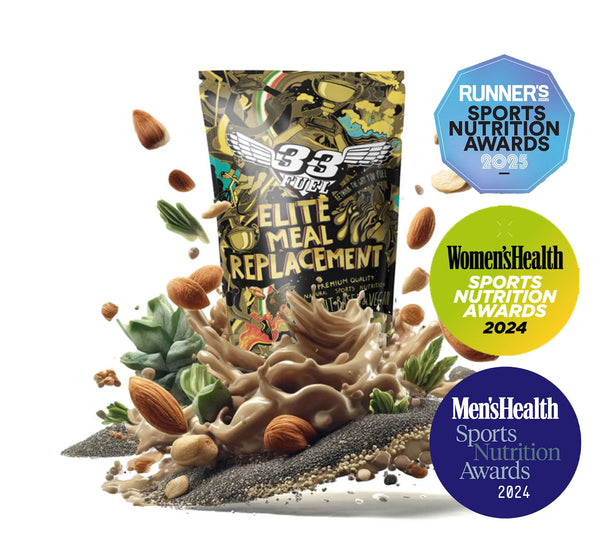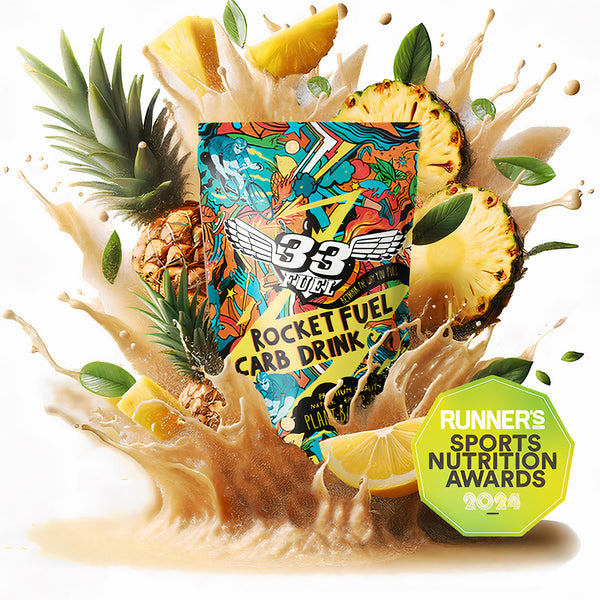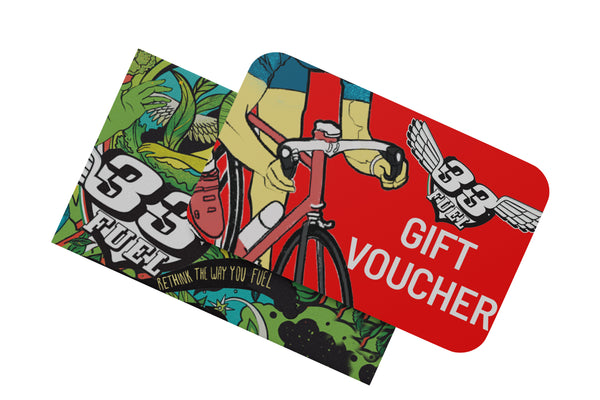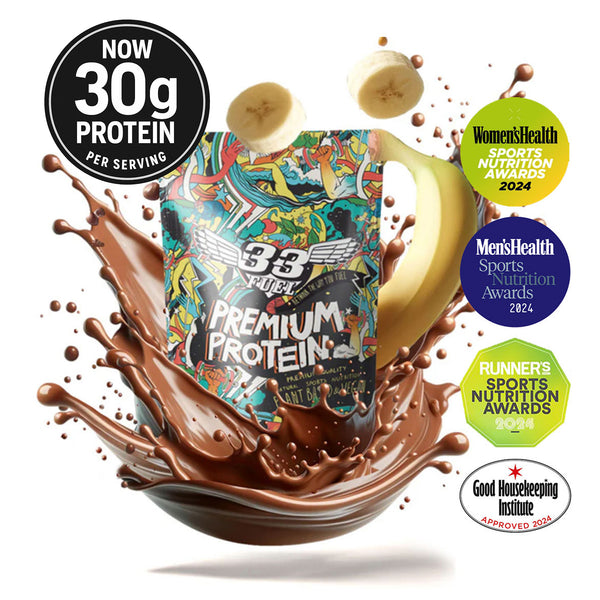Why Sugar is the Optimal Carb Source During Exercise (and Why Maltodextrin and other UPF carbs aren’t)
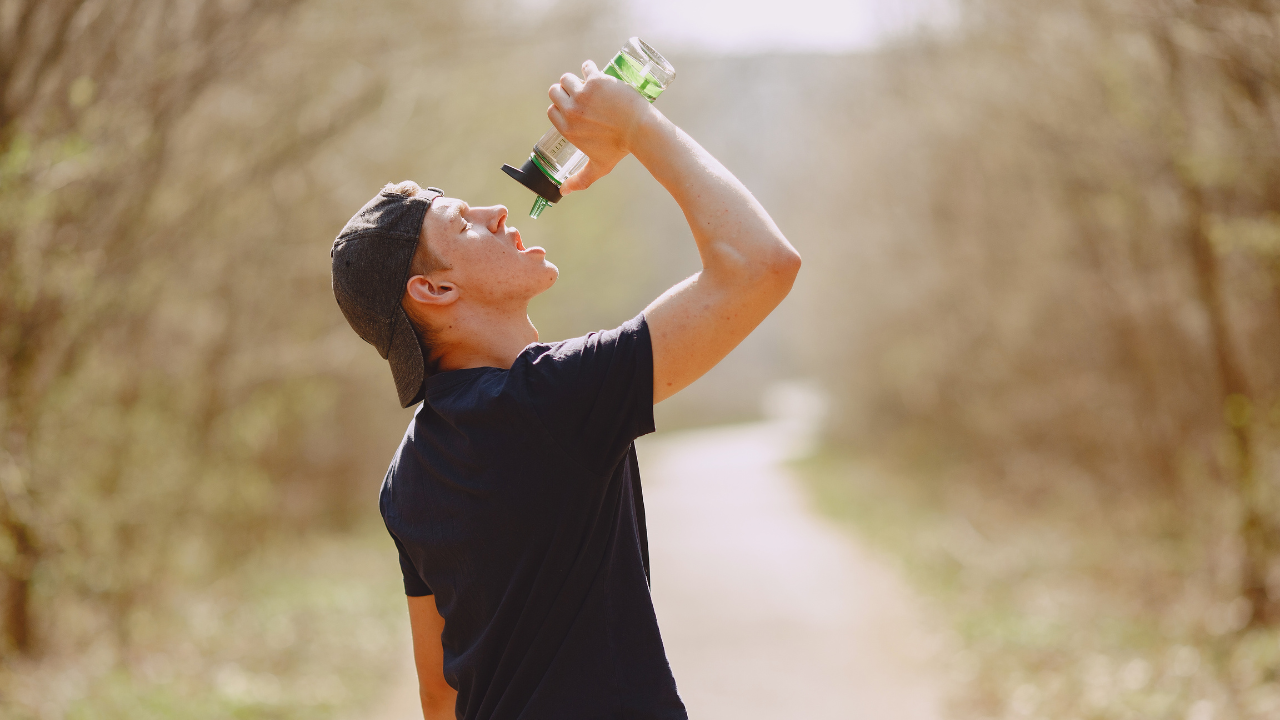
Sugar is the enemy, leaving obesity, diabetes, and metabolic decline wherever it goes. While this is true in sedentary populations, it's a gross oversimplification for athletes because during sport, sugar isn't the villain - it’s the unsung hero
Everything below is evidence based and is why, at 33Fuel, when we need a natural carb source in our energy products, some sugar is always a choice.
Is Sugar Bad for Athletes? Not During Exercise
Let’s bust a myth: sucrose (table sugar), a natural 50:50 blend of glucose and fructose, is one of the most efficient fuels during exercise. Unlike all ultra-processed (UPF) carbs like maltodextrin, glucose or fructose syrups, cluster dextrins and others, sugar works with the body’s metabolism in an active state, supporting both performance and long-term health.
Shop our award-winning sports nutrition
Sugar vs Maltodextrin: A Metabolic Advantage in Active Bodies
During exercise, our metabolism changes. Muscles demand rapid energy, and insulin sensitivity increases dramatically. In this context, sugar in an active population is quickly absorbed and used for fuel—not stored as fat or linked to the negative effects it can cause in sedentary individuals.
Glucose-fructose blends (like sugar) deliver significantly higher carb oxidation rates than glucose or maltodextrin alone (1), while in another study sugar-equivalent drink reduced finish times by 8% compared to a maltodextrin-only version in trained cyclists (2).
Why Not Use Maltodextrin or other UPF carb sources?
Maltodextrin and its UPF cohorts (glucose and fructose syrups, cluster dextrins, etc) dominate sports nutrition products – but not because they’re best for performance or health.

Working hard? Your body is naturally primed to burn sugar completely, cleanly and efficiently
It’s because they’re
- Ultra-processed (UPF, NOVA Group 4)
- Stripped of nutritional value
- Very cheap to make
- Shelf-stable and neutral-tasting
These traits benefit manufacturers with cheaper production costs and higher profits, but do not benefit athletes with improved results and wellbeing. As a business 33Fuel would save money and time using a UPF carb source like maltodextrin instead of sugar, but as that can only make a worse product for you and your health, we'll never do it.
Performance Impact: Sugar Beats Maltodextrin and Co
Maltodextrin relies on a single absorption pathway (SGLT1), which maxes out around 60g/hour—leading to common issues like bloating and GI distress.
Sugar, by contrast, uses dual pathways:
- Glucose absorption via SGLT1
- Fructose absorption via GLUT5
This allows sugar to deliver higher absorption rates and significantly fewer digestive problems than a UPF carb like maltodextrin. (3, 4)
Studies consistently show that a glucose–fructose blend, like natural sugar, restores muscle glycogen more effectively than glucose alone, thanks to this dual-pathway absorption and improved liver glycogen replenishment. (5)
The ‘Sugar-Free’ Label Trap: Maltodextrin’s Deception
Maltodextrin and other UPF carbs enable ‘sugar-free’ claims because they’re listed under ‘carbohydrates’, not ‘sugars’, on nutrition labels.
But metabolically the damage is far greater:
- The Glycemic Index (GI) of maltodextrin is higher than sugar (6)
- Maltodextrin spikes blood sugar more aggressively
- Maltodextrin triggers insulin surges more strongly than sugar
- Maltodextrin disrupts gut microbiota (7, 8, 9)

Your training or racing can be as dirty as you like, but your fuel should always be clean. Sugar delivers, naturally
The UPF Paradox: Real Sugar vs Synthetic UPF Carbs
Maltodextrin and other UPF carb sources are made in factories. Sugar – especially quality sources like brown cane sugar and coconut palm sugar – grow from the soil like any other natural plant and can contain small amounts of minerals, antioxidants, and real flavour.
These natural roots – literally – are why natural sugar can help deliver better digestion, sustainability, and taste as well as the performance you need in sport.

Sugar - grown naturally, unlike UPF alternatives
Sugar: Real Performance Backed by Real Science
Sugar supports:
- Faster dual-path carb delivery for performance
- Lower risk of GI distress when used during exercise
- Superior liver glycogen replenishment both during and after exercise
- Higher tolerability and improved consistency of intake via better taste
When to Use Sugar for Best Results
Sugar is ideal during or just before exercise when:
- Metabolic demand is high
- Insulin sensitivity is elevated
- Carb oxidation is rapid and essential
Better for You, Better for the Planet
Natural sugars are only lightly processed (NOVA Group 2), never ultra-processed (NOVA Group 4, UPF) and are more sustainable than factory-made synthetic carbs. For example, coconut palm sugar has a low environmental footprint and supports diverse ecosystems.
Time to Rethink the Sugar Myth
Forget the fear. Used intelligently, sugar is not the enemy. It’s a proven, natural performance fuel that outperforms maltodextrin and other UPF carb alternatives for energy delivery, gut comfort, and sustainability.
For athletes, the smarter choice is clear - naturally.
References
(1) Jeukendrup AE, et al. 'High oxidation rates from combined carbohydrates ingested during exercise.' Link
(2) Currell K, Jeukendrup AE. 'Superior endurance performance with ingestion of multiple transportable carbohydrates.' Link
(3) Jeukendrup. ‘A Step Towards Personalized Sports Nutrition: Carbohydrate Intake During Exercise’ Link
(4) De Oliveira EP, Burini RC. 'Carbohydrate-dependent, exercise-induced gastrointestinal distress.' Link
(5) van Loon et al, Maximizing postexercise muscle glycogen synthesis: carbohydrate supplementation and the application of amino acid or protein hydrolysate mixtures. Link
(6) University of Sydney, Glycemic Index Research. Link
(7) Arnold, Chassaing. Maltodextrin, Modern Stressor of the Intestinal Environment. Link
(8) Nickerson & McDonald. Deregulation of intestinal anti-microbial defense by the dietary additive, maltodextrin. Link
(9) Martino et al. Maltodextrin Consumption Impairs the Intestinal Mucus Barrier and Accelerates Colitis Through Direct Actions on the Epithelium. Link




